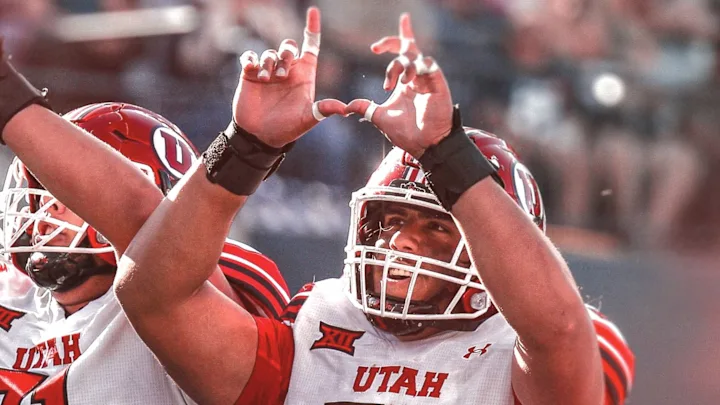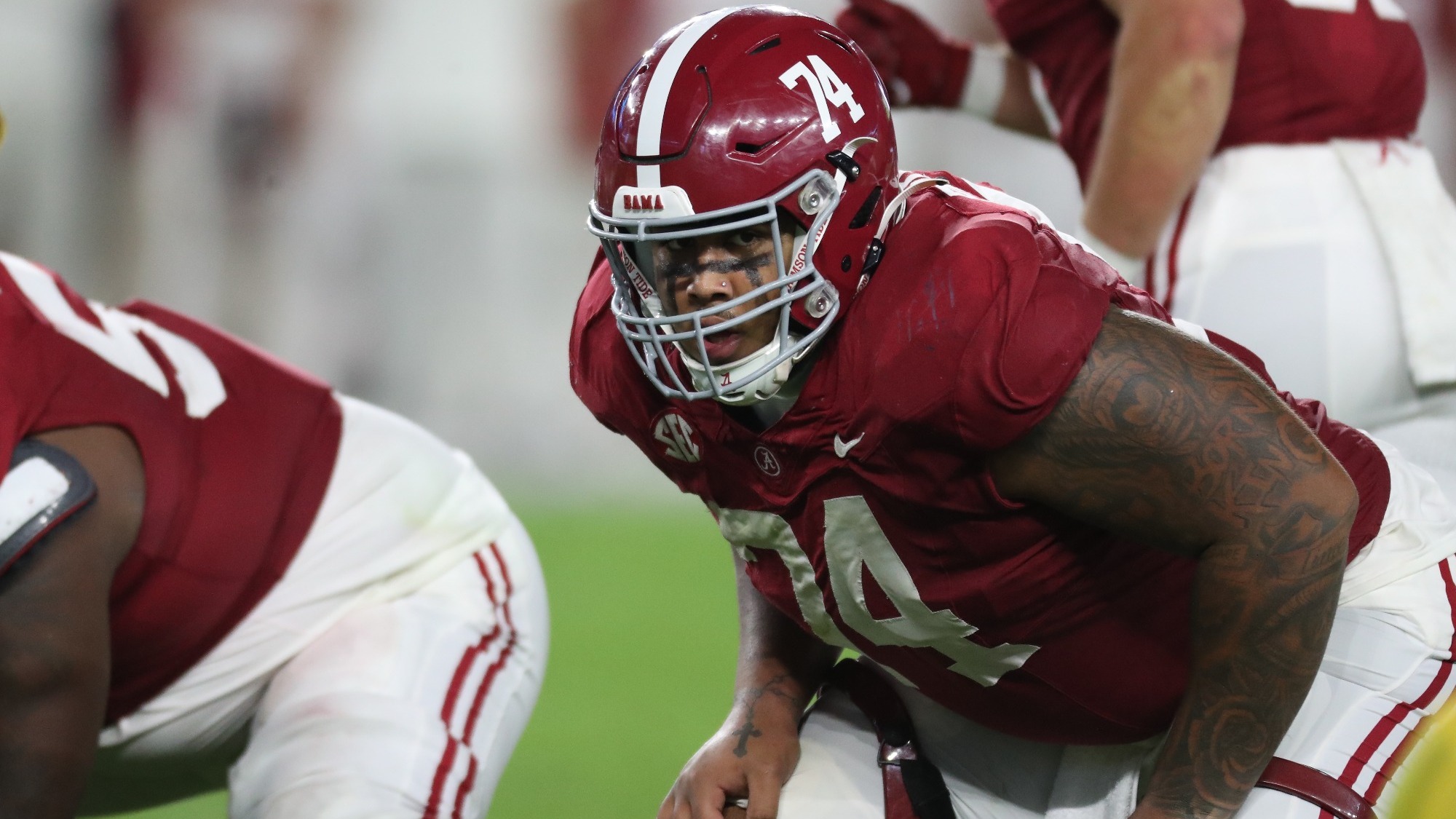By Charlie Campbell.
Send Charlie an e-mail here: [email protected]
Follow Charlie on Twitter @draftcampbell for updates.
This page was last updated April 17, 2015. Follow me @walterfootball for updates.
Position Review: Tight Ends
Tight End Class
Early-round talent: D
Mid-round: D
Late-round: D
Overall grade: D
2015 prospects vs 2014
Maxx Williams < Eric Ebron
Clive Walford < Austin Seferian-Jenkins
Nick O’Leary < Jace Amaro
Blake Bell < Troy Niklas
Wes Saxton < C.J. Fiedorowicz
Jeff Heuerman < Richard Rodgers
Tyler Kroft < Crockett Gilmore
Ben Koyack < Arthur Lynch
Tight end was one of the most talented positions in the 2014 NFL Draft class in the early rounds with some depth into the mid-rounds. This year is the exact opposite. The 2015 class is terrible at the tight end position from start to finish. Perhaps some of these players will become better pros than expected, but heading into the 2015 NFL Draft, it looks likely that a tight end won’t be selected in the first round. Perhaps as few as two tight ends will go in the first three rounds.
If you were to merge the two classes it would be ugly for 2015. Williams would go behind Niklas and ahead of Fiedorowicz. Walford would go behind Fiedorwicz and ahead of Rodgers, although Walford and Rodgers are pretty equal. Bell, Saxton and Heuerman would be behind Gilmore. Kroft and Koyack would be about equal to Lynch as fifth-round picks.
Safest Pick: Clive Walford, Miami

I think that Walford is safer because some teams have been skeptical of Williams in his team interviews. Source told me that back at the Combine, and it hasn’t changed since. The 6-foot-4, 251-pound Walford has surprising athleticism with very soft hands. He is a reliable and skilled outlet receiver. Walford also has some blocking potential with thick body to battle defensive ends and linebackers. Walford may never be one of the elite tight ends in the NFL, but he looks like a safe pick to turn into a quality pro.
Previous Picks:
2014: Eric Ebron
2013: Zach Ertz
Biggest Bust Potential: Nick O’Leary, Florida State

O’Leary could be selected on the second day of the 2015 NFL Draft, and there is some bust potential with him. O’Leary looks like an H-back type but his speed is a question for the NFL. As his 4.94-second time at the Combine illustrated, O’Leary could lack the ability to separate from NFL safeties and some linebackers. He has good hands and runs good routes, but he isn’t a real force as a receiver and doesn’t make a huge impact as a blocker. O’Leary could be a role player only in the NFL and may just be a good college player who doesn’t translate to the NFL.
Previous Picks:
2014: Jace Amaro
2013: Gavin Escobar
Tight End Rankings by Attributes
Pass Receiving:
NFL prototype: Jimmy Graham, Seahawks
- Maxx Williams
- Clive Walford
- Wes Saxton
- Nick O’Leary
- Blake Bell
- Jeff Heuerman
- Tyler Kroft
- Ben Koyack
Recap: The NFL has evolved to the point where tight ends are a critical part of a potent passing attack. Some teams have better receiving weapons at tight end than they do at receiver. The league is driven by passing, so if a tight end can’t contribute as a receiver, he could have a hard time seeing the field. The 2015 NFL Draft has a nice group of receiving tight ends.
Williams is the clear-cut top of this class. He has real athletic ability to be one of the better productive pass-receiving tight ends in the NFL. Williams is very quick with mismatch speed to get separation and run away from defensive backs. He can burn man or zone coverage with the ability to produce chunk plays. Williams hurts teams down the middle of the field with his speed and athleticism. He is very good after the catch and has shown the ability to be tough to tackle in the open field.
After Williams is Walford, who had 44 receptions for 676 yards and seven touchdowns last year despite a freshman quarterback and could have produced more. At the Senior Bowl, Walford was extremely impressive. He burned safeties and used his big frame to make some acrobatic catches. Walford really showed some dynamic receiving skills that caused scouts to take notice.
Saxton had only 20 receptions last year for 155 yards while dealing with injuries, but he’s a better receiver than that total indicates. The 6-foot-4, 235-pounder is fast, and the previous year, he had 50 catches for 635 yards. Saxton could be an athletic move tight end in the NFL.
O’Leary was a very reliable target for E.J. Manuel and Jameis Winston over four years at Florida State. O’Leary has great hands and can make tough catches. The speed to separate is why he’s rated behind the top three.
If Bell had played his entire collegiate career at tight end, he probably would be higher. The East-West Shrine gave him to opportunity to show a real ability to get open and make plays downfield. Bell was quick to get separation with his long body and athleticism to go up and make catches.
Heuerman didn’t produce big numbers at Ohio State, but he has underrated receiving skills. Heuerman will be more of a blocking tight end, but he could contribute some receiving in the NFL. Kroft and Koyack are more blocking tight ends.
Blocking:
NFL prototype: Heath Miller, Steelers
- Jeff Heuerman
- Ben Koyack
- Clive Walford
- Maxx Williams
- Tyler Kroft
- Nick O’Leary
- Blake Bell
- Wes Saxton
Recap: Blocking ability is still important for NFL tight ends; not just in the ground game, but in pass protection. Teams like their tight ends to have the ability to help tackles when they’re going against an elite edge-rusher.
The best blocker of the group above is Heuerman. He was a strong edge blocker for the Buckeyes over the past few seasons and helped their potent rushing attack immensely. Heuerman is strong at the point of attack and can push defenders out of the play. He can also tag-team with an offensive tackle to seal the edge. Heuerman definitely has the capacity to be a tough blocking tight end who will be an asset in short-yardage and goal-line situations.
Koyack is also a very good blocker who was prepared well at Notre Dame. He is strong and blocks with some power. Miami coached up Walford well. He is a good contributor as a blocker and helped Duke Johnson have good holes on the ground. Kroft was respectable for Rutgers.
O’Leary has some blocking potential as well. He has some natural thickness and gets to blocks on the second level, but isn’t all that powerful as a blocker. O’Leary could stand to get better in the NFL.
Bell has to improve his blocking for the NFL. He needs to make big strides there, but he has size and strength to work with. It isn’t his fault as the majority of his time in college was spent as a quarterback. Saxton will have to add strength. Both Bell and Saxton need to develop their blocking abilities for the NFL.
Red Zone:
NFL prototype: Antonio Gates, Chargers
- Maxx Williams
- Clive Walford
- Nick O’Leary
- Blake Bell
- Jeff Heuerman
- Ben Koyack
- Wes Saxton
- Tyler Kroft
Recap: Tight ends are critical players in the red zone, and multiple tight ends are needed for goal-line packages. Many teams also like to use double-tight end sets inside the 20-yard line. A tight end who is a big target with sure hands and leaping ability is a good weapon to help produce touchdowns instead of field goals.
Williams (6-4, 249) was the most productive in the red zone of this group of tight ends. He used his frame, athleticism and leaping ability to make tough receptions. Williams is also skilled at finding openings for his signal-caller while running down the middle. Williams led all of these tight ends with eight touchdowns in 2014. He could be a red-zone stud in the NFL.
Walford (6-4, 251) is a similar specimen to Williams. Walford had seven scores last year, but it could have been more. He is quick to get open and can make some acrobatic catches. Walford should be a good red-zone weapon in the NFL.
O’Leary is an underrated red-zone contributor, notching six scores last year. He is a smart receiver who makes tough catches in traffic and should be a big part of the red-zone offense in the condensed field.
Bell (6-6, 252) possesses the size and athleticism to beat defenders in the end zone. He has the quickness to get open and frame to shield defenders from the ball. Bell totaled four scores in in 2014, his only season as a tight end.
Heuerman should be part of a red-zone package because of his blocking and receiving skills. He only had two scores last year, but had the potential to do more damage. Koyack is similar, though is not as athletic or quick. Saxton had only one score the past two years, while Kroft didn’t score last season.
Speed:
NFL prototype: Vernon Davis, 49ers
- Wes Saxton
- Maxx Williams
- Clive Walford
- Blake Bell
- Nick O’Leary
- Jeff Heuerman
- Tyler Kroft
- Ben Koyack
Recap: The NFL is all about mismatches, and tight ends with speed are going to provide a mismatch on a weekly basis. Few teams have linebackers or safeties who can match up against an elite tight end. I don’t put a lot of stock in 40 times and rate this more on playing speed going against defenders, so the order of 40 times at the Combine may not match up with how I have them ranked.
The fastest player in this group is Saxton. He has the speed to beat defenders in man coverage and get downfield quickly. For the NFL, it is somewhat of an unknown considering he played at a small school. But, being fast and athletic are the biggest strengths of his game.
Williams didn’t run well at the Combine, but he plays with quickness. He gets down the seam fast and has a second gear in the open field. Williams can rip off yards in chunks.
Walford and Bell also have some good speed. Each one flashed that in an all-star game. They achieved separation from safeties and linebackers while having the burst out of their cuts to get open. Walford produced some long receptions in 2014 and can surprise defenses when he gets into the open field.
O’Leary and Heuerman have enough quickness, but they may not be fast enough to get separation from some NFL safeties and linebackers. Kroft and Koyack aren’t particularly slow, but they won’t present a speed mismatch in the NFL.
Hands:
NFL prototype: Jason Witten, Cowboys
- Nick O’Leary
- Clive Walford
- Maxx Williams
- Wes Saxton
- Jeff Heuerman
- Blake Bell
- Tyler Kroft
- Ben Koyack
Recap: Tight ends with bad hands don’t get thrown the ball often in the NFL. They have a hard time seeing the field and end up only playing in goal-line situations and on special teams. In the group above, there isn’t a player who I would say has bad hands.
O’Leary, Walford and Williams all have really good hands. I think O’Leary is the most sure-handed of the three. He never drops passes. Walford has really soft hands, too, and is a natural hands catcher. There are plays where it seems like he has glue on his hands. Williams was very reliable as well. A drop is a rare sight from any of these three.
Saxton’s hands were steady in college and at the Senior Bowl. He should be reliable in the NFL. Bell has some natural athleticism with hands, and in a few years, he could be higher on this list after he gains more experience at tight end. Heuerman, Kroft and Koyack all have reliable hands. You wouldn’t say that any of them had bad hands.
H-Back:
NFL prototype: Charles Clay, Bills
- Wes Saxton
- Nick O’Leary
- Maxx Williams
- Clive Walford
- Tyler Kroft
- Blake Bell
- Jeff Heuerman
- Ben Koyack
Recap: Many offensive coordinators like tight ends with the flexibility to line up as an h-back. That allows them to set up more mismatches and align blocking schemes differently. Not all tight ends have the athletic ability and quickness to pull off h-back responsibilities. Aaron Hernandez was superb at it for New England and was the prototype a few years ago. Charles Clay is the best now.
Saxton projects as the best h-back tight end of all the prospects in this draft class. He could possibly play some fullback in the NFL.
O’Leary has the body type that could translate to h-back. He could be a Chris Cooley type if he lost some weight to improve his quickness and agility.
Williams, Walford and Kroft could all play h-back, but they don’t look like natural fits for that kind of role. Bell, Heuerman and Koyack are oversized, and none of them look like fits for h-back.
Downfield Threat:
NFL prototype: Jimmy Graham, Seahawks
- Maxx Williams
- Clive Walford
- Wes Saxton
- Blake Bell
- Nick O’Leary
- Jeff Heuerman
- Tyler Kroft
- Ben Koyack
Recap: Teams have had success in recent years with tight ends being used to stretch the field down the middle seam. Big plays through the air aren’t limited to just receivers as there are a number of tight ends who can get vertical. Burning a secondary with a tight end is another weapon for offenses that make a defense’s job much more difficult.
Projecting to the NFL, Williams is more than quick enough to hurt a defense downfield. He made a number of catches for long gains in college as he pulled away from defenders. Williams has a second gear when he breaks into the open field and plays faster than he timed.
Walford had similar success going downfield at Miami, and he had a long touchdown against Florida State’s fast defense in 2014. Walford can catch defenses by surprise and has a burst to him.
Saxton has the foot speed to be a downfield threat, and it will be interesting to see how he translates to the NFL. Bell and O’Leary can get down the seam. Bell was making plays at the East-West Shrine downfield. O’Leary can make some chunk catches, but he’ll get caught from behind by defensive backs.
Heuerman, Kroft and Koyack are bigger and look more likely to be effective on short routes.
Yards After Catch:
NFL prototype: Ron Gronkowski, Patriots
- Maxx Williams
- Clive Walford
- Blake Bell
- Wes Saxton
- Nick O’Leary
- Jeff Heuerman
- Tyler Kroft
- Ben Koyack
Recap: There are some tight ends in the NFL who are very dangerous with the ball in their hands. Having the ability to pick up yards after the catch (YAC) is not an easy trait to find in tight ends. This class has some nice options.
Williams is a natural runner with the ball in his hands and darts down the field for extra yards. He has vision, shiftiness and knows how to weave through traffic. In the NFL, Williams could be a weapon on tight end screen passes.
Walford, Bell, Saxton, and O’Leary all run well with the ball in their hands. Beyond their quickness, they are big loads that can be tough to bring down, especially Bell. He can run over defenders and keep going. Walford got a lot of yards after the catch last year and Saxton showed some impressive YAC in 2013.
Kroft and Heuerman can pick up yards when hit on the run.
NFL Picks - Dec. 19
NFL Power Rankings - Dec. 17
2026 NFL Mock Draft - Dec. 17
Fantasy Football Rankings - Sept. 1



